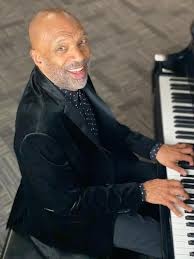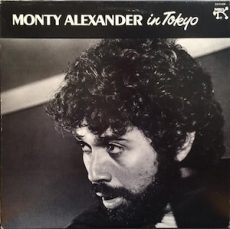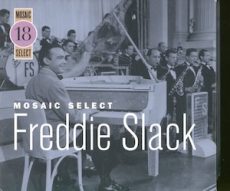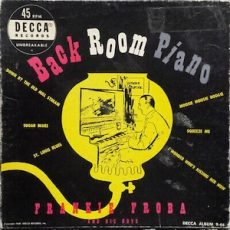
Daily Dose Of Jazz…
Bent Axen was born on August 12, 1925 in Copenhagen, Denmark.
Axen played for a year with Ib Renard in 1949 and in 1950 became a member of the Johnny Campbell and Max Brüel bands until 1958. He then moved on to work in Ib Glindemann’s orchestra. In 1960 he founded his own jazz quintet and also accompanied guest soloists such as Eric Dolphy in Erik Moseholm ‘s trio.
Between 1961 and 1967 he was a member of the radio jazz groups of Danmarks Radio, for which he also wrote compositions. He also performed with Don Byas. He went on to work as a theater musician and composer, first at Gladsaxe Teater and from 1971 at Folketeatret.
In 1960 he was honored as Danish “Jazz Musician of the Year”. Pianist, theatre and film composer Bent Axen, who released a half dozen albums as a leader, died on May 20, 2010.

WILLIAM GREEN TRIO
William Green is an extraordinary musical artist that captures and expresses the sentiments of a generation. He is continuously expanding his horizons to make an impact on society by creating a union between music and life. Through his music, he has allowed different genres of contemporary jazz, rhythm and blues, pop and gospel to integrate into a new and unique form.

Requisites
Monty Alexander In Tokyo | By Eddie Carter
I first heard Monty Alexander In Tokyo (Pablo Records 2310-836) in 1985 at the former jazz station, WNOP 740 AM, after my move to Cincinnati from Cleveland, Ohio. It was recorded during the pianist’s first trip to the city and is his nineteenth release as a leader. Here, he is working with two of the best in the business: Andy Simpkins on bass and Frank Gant on drums. My copy is the 1979 U.S. Stereo pressing, and the trio opens this musical adventure with a trip to Broadway by Billy Byrd, Teddy McRae and Henri Woode. They begin this catchy tune with a delightfully crafted melody. Monty cuts loose in a spirited statement that’s sure to have your fingers popping and toes tapping along until the song’s conclusion.
Just In Time by Jule Styne, Betty Comden, and Adolph Green starts with a short introduction by Monty, segueing into the threesome’s pulsating theme, who treats the standard like an old friend. Monty comes alive in the song’s only interpretation ahead of the closing chorus and finish. Sweet Lady is a lovely ballad by Dave Zoob, Frank Crumit, and Howard E. Johnson. It’s a showcase for Monty and Andy, who start the song with a tender introduction that leads to their enchanting melody. The duo sustains the gentle mood in the delicately sensitive statement they share, preceding a polite reprise and climax.
Tricotism by Oscar Pettiford begins with the trio introducing this happy swinger collectively before taking the theme at a fast clip. Monty kicks off the solos with a scintillating opening statement; then Andy takes over for a bit of brisk walking. The pianist has a second interlude before Frank engages in a short workout ahead of the melody’s restatement and ending. Never Let Me Go by Jay Livingston, and Ray opens with the threesome’s slow-tempo introduction. The pace picks up to a medium beat for the opening chorus, ahead of the pianist’s driving solo that has something to say into the closing chorus.
Up next is Montevideo by Richard Evans, which takes off from the opening notes of the trio’s upbeat introduction and melody. The rhythm section spurs Monty to soar into the stratosphere in the song’s only statement until he returns to Earth for the theme’s reprise and abrupt ending. Pawnbroker by Quincy Jones is a very pretty ballad from the 1964 film drama. It’s a solo showcase for Monty Alexander, and the pianist uses the poignant melody effectively to depict the song’s sincerity and melodic beauty in a gorgeous interpretation, preceding the melody restatement and a lovely summation.
See See Rider by Ma Rainey brings the album to a close on an upbeat note. The trio starts expressing their joy and pleasure in the melody. Monty is up first with an especially impressive interpretation; then Andy takes a short walk through the second reading. The pianist puts the finishing touches on the song ahead of the closing chorus and ending. Monty Alexander produced Monty Alexander In Tokyo, and Katsuyuki Handa and Kazutoyo Takeda were the recording engineers. The sound quality is excellent, with a vivid soundstage that transports the trio to your listening room’s sweet spot.
Whether you’re new to Monty Alexander’s music or a seasoned fan, Monty Alexander In Tokyo is a versatile album that’s perfect for any occasion. It’s the perfect soundtrack for a relaxing evening or a lively dinner with friends. I highly recommend adding it to your jazz library. With its diverse range of tracks, it’s a testament to the trio’s musical prowess and a must-have for anyone who loves a piano trio!
~ Just In Time – Source: JazzStandards.com
~ Broadway, See See Rider – Source: Wikipedia.org
© 2024 by Edward Thomas Carter
More Posts: choice,classic,collectible,collector,history,instrumental,jazz,music,piano

Daily Dose Of Jazz…
Frederick Charles Slack was born on August 7, 1910 in Westby, Wisconsin and learned to play drums as a boy. He later took up the xylophone and at the age of 13 he changed to the piano. He studied with a local teacher throughout high school and at the age of 17, he moved with his parents to Chicago, Illinois where he continued his musical training.
Meeting clarinetist Rosy McHargue gave him the opportunity to accompany her to hear Bix Beiderbecke and Earl Hines. His first job was with Johnny Tobin before moving to Los Angeles, California where he worked with Henry Halstead, Earl Burtnett and Lennie Hayton.Then in 1934 he joined Ben Pollack.
He went on to play with the Jimmy Dorsey Band in the 1930s and was a charter member of the Will Bradley Orchestra when it formed in 1939. Known to bandmates as Daddy Slack, he played the piano solo on Bradley’s recording of Beat Me Daddy, Eight to the Bar, one of the early white boogie-woogie hits and a classic of the big band era.
Forming his own band in 1942 he signed with the newly founded Capitol Records and recorded three songs at his third recording session. His recording of Cow Cow Boogie was sung by the 17-year-old Ella Mae Morse and was Capitol’s first gold single. Slack continued to record some 80 tracks with Capitol until 1950.
Slack also recorded with Big Joe Turner, Johnny Mercer, Margaret Whiting and Lisa Morrow. He has been mentioned in song, co-wrote the 1945 classic The House of Blue Lights, first recorded with singer Ella Mae Morse.
Swing and boogie-woogie pianist and bandleader Freddie Slack was found dead in his bedroom in Hollywood, Los Angeles, California, from undetermined causes on August 10, 1965.
More Posts: bandleader,instrumental,jazz,music,piano

Daily Dose Of Jazz…
Frank Froeba was born August 6, 1907 in New Orleans, Louisiana. While still in his teens he held jobs in the bands of Johnny Wiggs and John Tobin. By the age of 17 he played with Johnny de Droit in New York City in 1924-1925, then led his own band in Atlantic City, New Jersey.
In the latter half of the decade Frank moonlighted in other dance ensembles. He recorded with Jack Purvis in 1930 and with Jack Bland in 1932, then worked with Benny Goodman from 1933 to 1935. This was followed in 1935 to 1944 where he led his own band and played on recordings for Columbia and Decca. Among his sidemen were Bunny Berigan, Jack Purvis, Bobby Hackett and Joe Marsala.
He was a house pianist for Decca in the 1930s and 1940s, playing behind Bob Howard and Lil Armstrong, among others. In 1955, he moved to Miami, Florida and performed as Frank Froba, moving more into popular performance.
One of his more popular tracks, Jumpin’ Jive, which he co-wrote with Cab Calloway. It was recorded by Joe Jackson on his Joe Jackson’s Jumpin’ Jive album.
Pianist and bandleader Frank Froeba died on February 16, 1981 in Miami.
More Posts: bandleader,history,instrumental,jazz,music,piano



